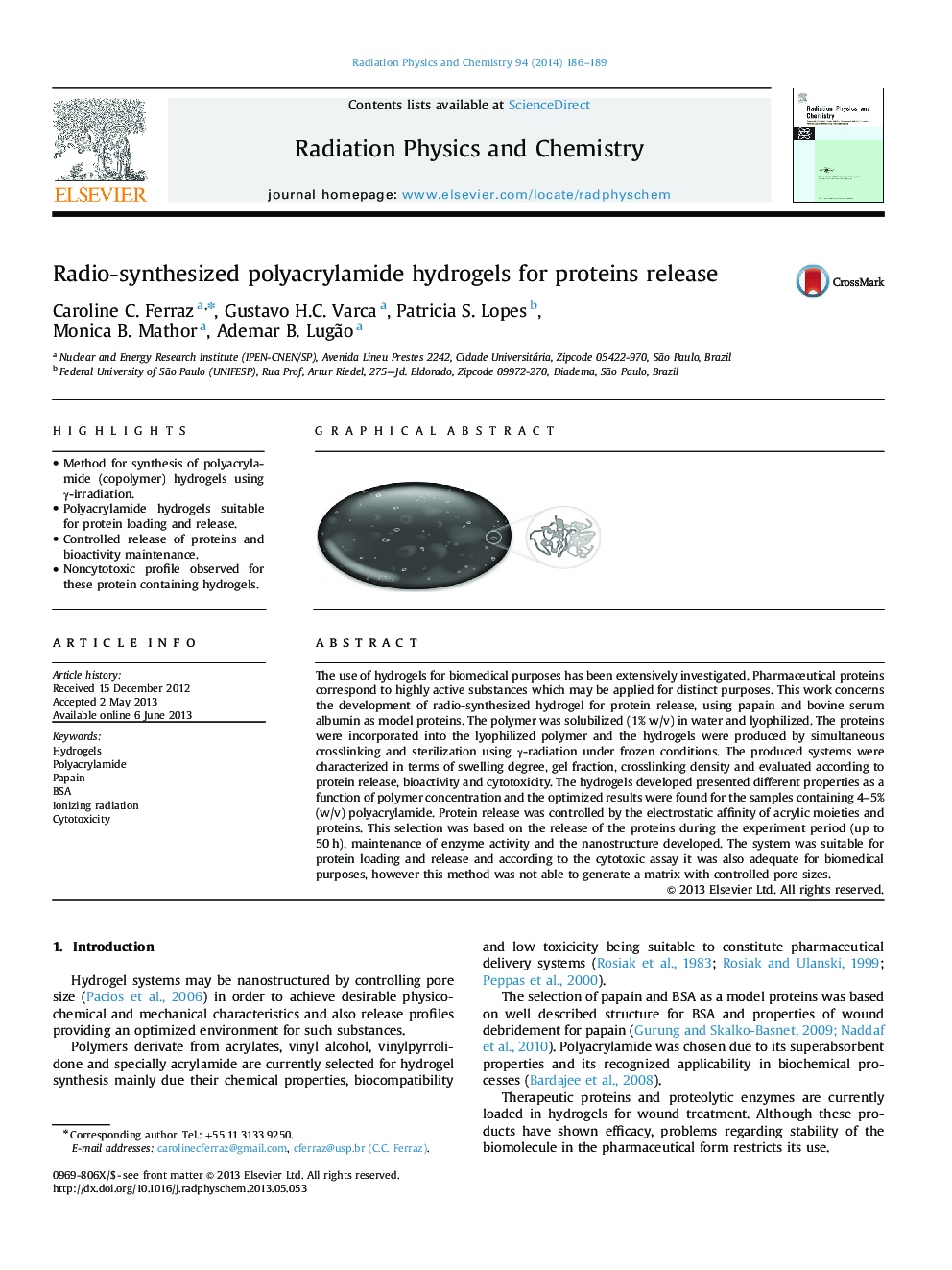| Article ID | Journal | Published Year | Pages | File Type |
|---|---|---|---|---|
| 1891380 | Radiation Physics and Chemistry | 2014 | 4 Pages |
•Method for synthesis of polyacrylamide (copolymer) hydrogels using γ-irradiation.•Polyacrylamide hydrogels suitable for protein loading and release.•Controlled release of proteins and bioactivity maintenance.•Noncytotoxic profile observed for these protein containing hydrogels.
The use of hydrogels for biomedical purposes has been extensively investigated. Pharmaceutical proteins correspond to highly active substances which may be applied for distinct purposes. This work concerns the development of radio-synthesized hydrogel for protein release, using papain and bovine serum albumin as model proteins. The polymer was solubilized (1% w/v) in water and lyophilized. The proteins were incorporated into the lyophilized polymer and the hydrogels were produced by simultaneous crosslinking and sterilization using γ-radiation under frozen conditions. The produced systems were characterized in terms of swelling degree, gel fraction, crosslinking density and evaluated according to protein release, bioactivity and cytotoxicity. The hydrogels developed presented different properties as a function of polymer concentration and the optimized results were found for the samples containing 4–5% (w/v) polyacrylamide. Protein release was controlled by the electrostatic affinity of acrylic moieties and proteins. This selection was based on the release of the proteins during the experiment period (up to 50 h), maintenance of enzyme activity and the nanostructure developed. The system was suitable for protein loading and release and according to the cytotoxic assay it was also adequate for biomedical purposes, however this method was not able to generate a matrix with controlled pore sizes.
Graphical AbstractFigure optionsDownload full-size imageDownload as PowerPoint slide
